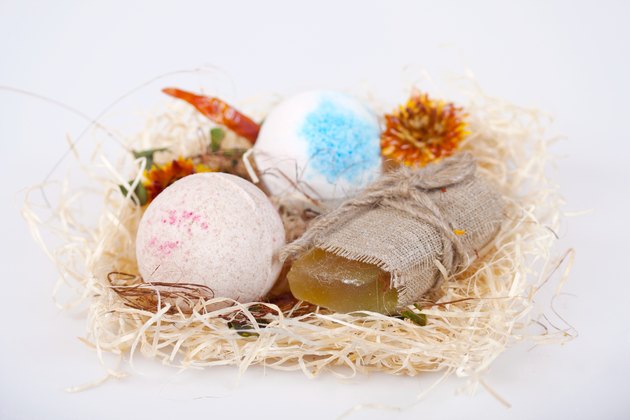Glycerin is a highly unique compound that is used to both moisturize your skin and provide anti-freeze for your car. Glycerin is also known as glycerol, glycerine, propane-1, 2, 3-triol, or 1,2,3-propanetriol. This simple chemical compound has a variety of uses in manufacturing, research, and cosmetic products. Often removed from more profitable soaps, and lotions, glycerin is the natural byproduct of the soap making process.

Chemistry
Glycerin is a very short molecule, having the chemical formula C3H8O3. It is composed of three carbon atoms, five hydrogen atoms, and three hydroxy or OH groups.The hydroxy groups are known as the functional alcohol groups, placing glycerin in the alcohol group of chemical compounds (reference 3).
Physical Properties
Glycerin is an odorless, thick, sweet-tasting, syrupy liquid (see reference 2 and 3). Pure glycerin has a specific gravity of 1.26, meaning that it is slightly more dense than water (see reference 2). Glycerin can freeze into a gummy paste and has a high boiling point. Glycerin readily dissolves water and alcohols but not oil-based compounds.
Glycerin is extremely hygroscopic, meaning that it attracts moisture. Exposed to air, pure glycerin will eventually become 80 percent glycerin and 20 percent water. Placed on your tongue, pure glycerin will cause excessive dehydration and result in blistering, as it draws moisture out of your tongue. Glycerin diluted with water, however, will soften skin. It is not clear, however, whether or not it is the hydrogscopic properties of glycerin that cause skin softening or some other mechanism (see reference 1).
Sources
Natural glycerin is found in animal and plant fats. Triglycerides, or fats, are composed of three long hydrocarbon chains linked to a glycerin backbone molecule through the functional OH groups (see reference 3). When broken down, triglycerides form three long hydrocarbon chains and one glycerin molecule. The hydrocarbons provide the fuel, the glycerin is the byproduct.
Similarly, when fats and oils are hydrolyzed to yield fatty acids or soaps, glycerin is formed.
Glycerin is also commercially synthesized from propylene and can be obtained during fermentation as well, although the specific process by which that can be made to occur is proprietary (see reference 2).
Uses
Glycerin is a solvent, food additive, sweetening agent and emollient as well as a demulcent, an agent that forms a soothing film (see reference 2). Glycerin can be used to treat septic wounds and boils, a component of antifreeze, in the manufacture of resins and cellophane, ester gums, plasticizers, dynamite, nitroglycerine, cosmetics, liquid soap, perfume and toothpaste. It also helps keep fabrics pliable, preserves the printing on cotton, and prevents frost from forming on windshields. In research, glycerin is often used as the source of nutrients for fermentation cultures and can act as a preservative as well.(reference 2)
No comments:
Post a Comment